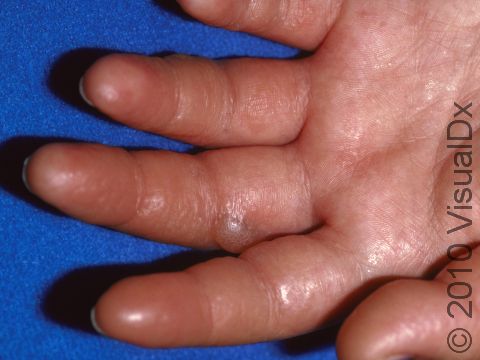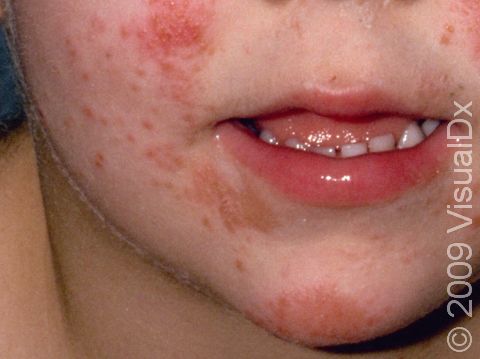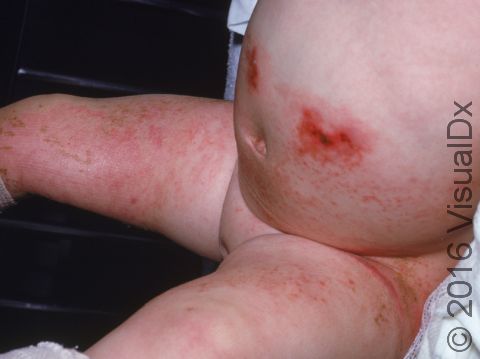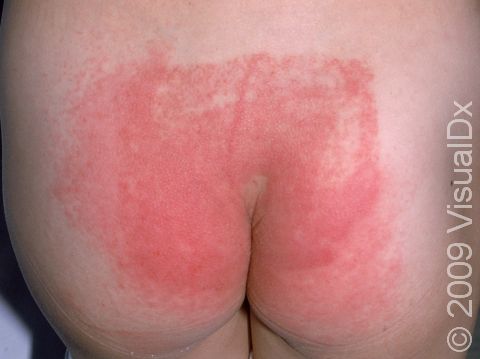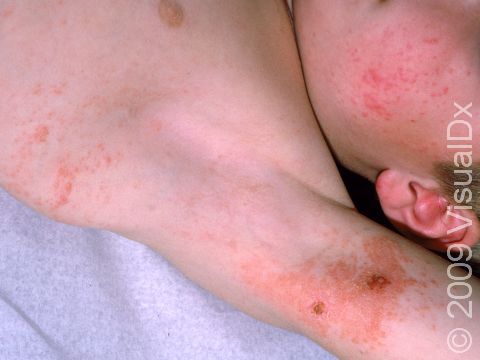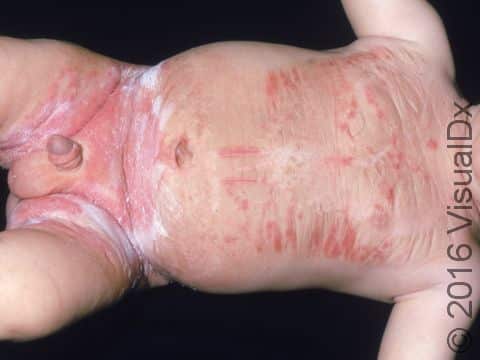Allergic Contact Dermatitis (Pediatric)
Allergic contact dermatitis is an inflammation of the skin caused by an allergy to a substance (the allergen). Unlike irritant dermatitis, which occurs at the time of the allergen touching the skin, contact dermatitis occurs 48–72 hours after exposure. The initial exposure does not cause the rash, but it sensitizes the skin to the next exposure.
The most frequent triggers causing allergic contact dermatitis include:
- Perfumes, nickel, neomycin, formaldehyde, lanolin, and other chemicals common in the environment.
- Poison ivy, poison oak, and poison sumac.
Who's At Risk?
Allergic contact dermatitis can occur at any age. However, the most common causes of allergic contact dermatitis in infants vary from the most common causes in older children and adults. Because infants are typically protected from the outside environment (eg, the poison ivy plant), the most common causes of allergic contact dermatitis are to ingredients in creams and soaps.
Signs & Symptoms
Contact dermatitis may occur anywhere on the body. Exposed areas such as the arms, legs, and face are most often affected. Scaly red-to-pink sheets of skin (plaques) and blisters may appear. Individual lesions have distinct (well-demarcated) borders and often assume shapes with straight edges and right angles. Eyelid swelling frequently occurs when the allergen is transferred from your finger to your eyelid. Affected areas are usually severely itchy.
When the dermatitis is long-standing, thickened plaques develop, and infection with bacteria may occur.
Self-Care Guidelines
- Avoid whatever is triggering the contact dermatitis.
- Apply cool water compresses to cleanse the area, and then apply over-the-counter 0.5–1% hydrocortisone cream twice daily.
- Calamine lotion and oral antihistamines (chlorpheniramine or diphenhydramine) may reduce the itching.
Treatments
- Treatment of contact dermatitis is aimed at preventing contact with the allergen. Symptoms may be controlled with oral antihistamines.
- Medium-potency topical steroids may be prescribed for rash occurring on the arms or legs (extremities) or trunk.
- Mild-potency topical steroids may be prescribed for use on the thinner skin of the face and skin-fold areas.
- Use the lowest potency topical steroids for the shortest period of time necessary.
- The doctor may do patch testing for allergies if the cause of the contact dermatitis is not known.
Visit Urgency
See your child’s doctor or a dermatologist for evaluation if the rash from contact dermatitis does not heal or keeps coming back and does not improve with self-care measures.
References
Bolognia, Jean L., ed. Dermatology, pp.223, 239, 253-256. New York: Mosby, 2003.
Freedberg, Irwin M., ed. Fitzpatrick’s Dermatology in General Medicine. 6th ed. pp.1109-1110, 1313, 2326. New York: McGraw-Hill, 2003.
Last modified on October 10th, 2022 at 8:27 pm
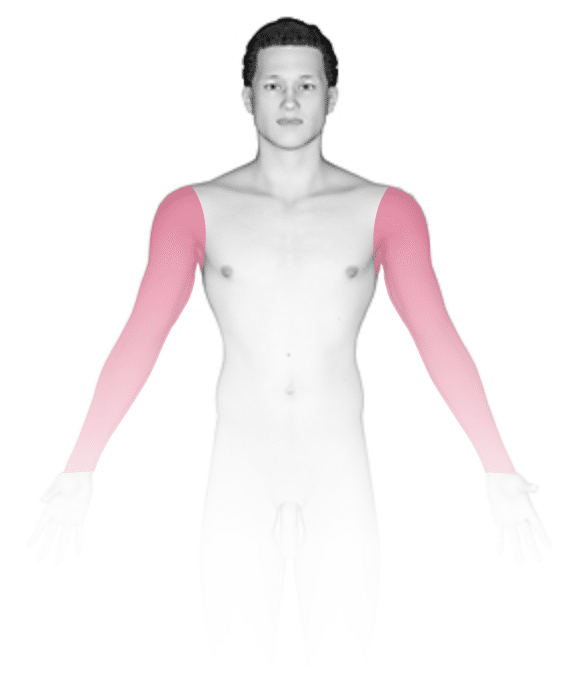
Not sure what to look for?
Try our new Rash and Skin Condition Finder
